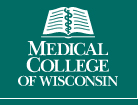Radiation Therapy Followed by Bleomycin in Treating Adult Patients With Newly Diagnosed Supratentorial Glioblastoma Multiforme
| Status: | Terminated |
|---|---|
| Conditions: | Brain Cancer, Brain Cancer, Brain Cancer |
| Therapuetic Areas: | Oncology |
| Healthy: | No |
| Age Range: | 18 - Any |
| Updated: | 4/21/2016 |
| Start Date: | June 2001 |
| End Date: | December 2005 |
A Phase II Trial Of Conventional Radiation Therapy Followed By Intratumoral Bleomycin Delivered Using A Refillable, Sustained Release Device (IND# 46,592) For The Treatment Of Supratentorial Glioblastoma
RATIONALE: Radiation therapy uses high-energy x-rays to damage tumor cells. Drugs used in
chemotherapy use different ways to stop tumor cells from dividing so they stop growing or
die. Combining radiation therapy with chemotherapy may kill more tumor cells.
PURPOSE: Phase II trial to study the effectiveness of radiation therapy followed by
bleomycin in treating adult patients who have newly diagnosed supratentorial glioblastoma
multiforme.
chemotherapy use different ways to stop tumor cells from dividing so they stop growing or
die. Combining radiation therapy with chemotherapy may kill more tumor cells.
PURPOSE: Phase II trial to study the effectiveness of radiation therapy followed by
bleomycin in treating adult patients who have newly diagnosed supratentorial glioblastoma
multiforme.
OBJECTIVES:
- Determine the median survival time of patients with newly diagnosed supratentorial
glioblastoma multiforme treated with radiotherapy followed by sustained release
intratumoral bleomycin.
- Determine the feasibility of this regimen in these patients.
OUTLINE: This is a multicenter study.
Within 4 weeks after surgical resection, patients receive radiotherapy daily 5 days a week
for 6 weeks.
Within 2-6 weeks after completion of radiotherapy or at disease progression during
radiotherapy, patients undergo surgical implantation of a modified Ommaya reservoir within
the central area of the tumor. Patients then receive sustained release bleomycin
intratumorally via the reservoir once a week for up to 2 years in the absence of disease
progression or unacceptable toxicity.
Patients are followed every 3 months for 2 years, every 6 months for 2 years, and then
annually thereafter.
PROJECTED ACCRUAL: A total of 72 patients will be accrued for this study within 5 months.
- Determine the median survival time of patients with newly diagnosed supratentorial
glioblastoma multiforme treated with radiotherapy followed by sustained release
intratumoral bleomycin.
- Determine the feasibility of this regimen in these patients.
OUTLINE: This is a multicenter study.
Within 4 weeks after surgical resection, patients receive radiotherapy daily 5 days a week
for 6 weeks.
Within 2-6 weeks after completion of radiotherapy or at disease progression during
radiotherapy, patients undergo surgical implantation of a modified Ommaya reservoir within
the central area of the tumor. Patients then receive sustained release bleomycin
intratumorally via the reservoir once a week for up to 2 years in the absence of disease
progression or unacceptable toxicity.
Patients are followed every 3 months for 2 years, every 6 months for 2 years, and then
annually thereafter.
PROJECTED ACCRUAL: A total of 72 patients will be accrued for this study within 5 months.
DISEASE CHARACTERISTICS:
- Histologically confirmed supratentorial glioblastoma multiforme (with areas of
necrosis) by surgical biopsy or excision within 4 weeks of study
- Tumor and/or any associated edema limited to one hemisphere and unifocal
- No gross invasion of a ventricular surface
- Tumor accessible
- No other astrocytoma
- No multifocal or recurrent malignant glioma
- No disease below the tentorium or beyond the cranial vault
PATIENT CHARACTERISTICS:
Age:
- Adult
Performance status:
- Zubrod 0-1
Life expectancy:
- At least 8 weeks
Hematopoietic:
- Hemoglobin at least 10 g/dL (transfusion allowed)
- Absolute neutrophil count at least 1,500/mm^3
- Platelet count at least 100,000/mm^3
Hepatic:
- Bilirubin no greater than 2.0 mg/dL
- Serum glutamic-oxaloacetic transaminase (SGOT) or Serum glutamic-pyruvic transaminase
(SGPT) no greater than 2 times normal
Renal:
- Blood Urea Nitrogen (BUN) no greater than 25 mg/dL
- Creatinine no greater than 1.5 mg/dL
Other:
- Not pregnant or nursing
- Fertile patients must use effective contraception
- No hypersensitive or idiosyncratic reaction to bleomycin
- No other prior malignancies within the past 2 years except nonmelanomatous skin
cancer or carcinoma in situ of the cervix or urinary bladder
- No other major medical illness or psychiatric impairment that would preclude study
participation
PRIOR CONCURRENT THERAPY:
Biologic therapy:
- Not specified
Chemotherapy:
- No prior chemotherapy for glioblastoma multiforme
- No prior radiosensitizer for glioblastoma multiforme
Endocrine therapy:
- Not specified
Radiotherapy:
- No prior radiotherapy to the head or neck resulting in overlapping radiotherapy
fields
Surgery:
- See Disease Characteristics
- Recovered from prior surgery
We found this trial at
13
sites
8800 W. Doyne Avenue
Milwaukee, Wisconsin 53226
Milwaukee, Wisconsin 53226
(414) 805-6840

Medical College of Wisconsin Cancer Center Cancer touches everyone in our community, and for many,...
Click here to add this to my saved trials
Click here to add this to my saved trials
Click here to add this to my saved trials
Click here to add this to my saved trials
Click here to add this to my saved trials
Click here to add this to my saved trials
Click here to add this to my saved trials
Click here to add this to my saved trials
Click here to add this to my saved trials
Click here to add this to my saved trials
LDS Hospital LDS Hospital provides clinical excellence to our community in a wide range of...
Click here to add this to my saved trials
Click here to add this to my saved trials
Click here to add this to my saved trials
